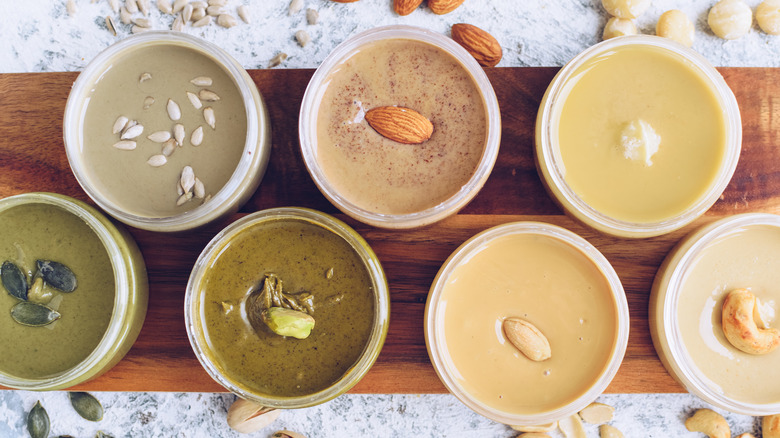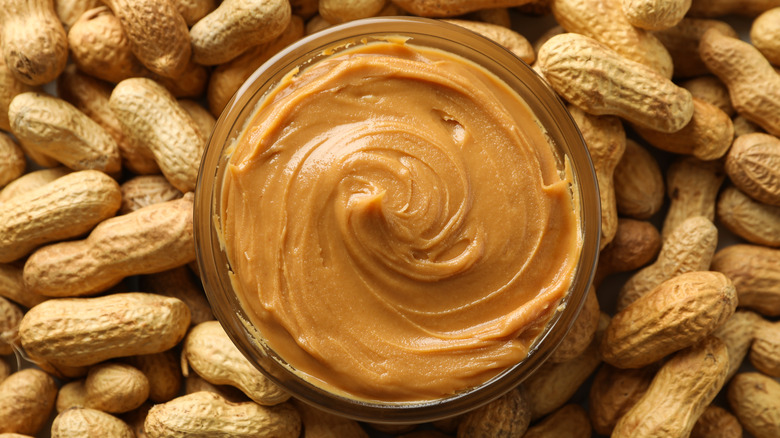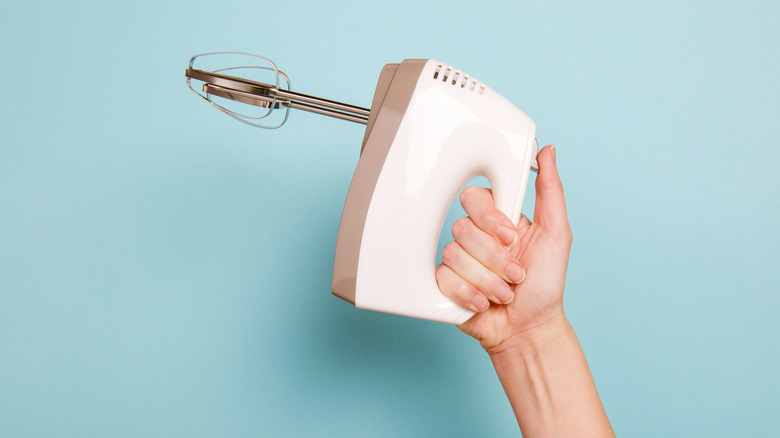The Easy Hack That Makes Stirring Nut Butter A Breeze
Healthier alternatives to preservative-packed nut butter, such as naturally-derived almond or cashew spreads per Well+Good, are always a good idea. According to WebMD, most of our commercial peanut butter brands pack in more hidden sugars, preservatives, and other less-than-ideal ingredients than we think. Still, one thing many mainstream nut butter brands have on others is its smooth texture. Most of the time you don't have to stir your jar of Jif peanut butter before you spread it on your toast. It's already all together in one silky smooth concoction.
So while other kinds of butter may offer their own benefits, like protein, healthy fats, vitamin E, and fiber per San Francisco Advanced Health, they are also often incredibly frustrating to spread. Some kinds of nut butter are nearly impossible to get out of its jar, with tough almond pastes stuck beneath a thick well of oil. It's not the best look, but the creamy and buttery taste makes it all worth it. While the fix to this problem is relatively simple, just stir the two components together until they become one, the execution is much harder than it seems. That's why we found a quick stirring hack so you no longer have to lose a spoon in your favorite jar of sunflower butter.
So what's with all the oil in the first place?
Some kinds of nut butter can look strange beneath the lid, and some people wonder why oil rises to the surface of these spreads. Luckily, it's completely normal. Per the National Peanut Board, visible oil in a jar of nut butter is usually a good sign as it means that manufacturers relied on natural forms of preservation. If the oil doesn't separate, this could even be an indicator that preservatives like partially hydrogenated oils are inside your butter. Most manufacturers have since removed it from their products, but in its place, other saturated fats like fully hydrogenated oils are used.
According to Claire Berryman, the assistant professor of human nutrition at Florida State University, you are meant to mix oil into nut butter so that they can attain a spreadable texture, via BBC. Per Live Strong, most natural nut butter will come with that layer of oil on the top, and according to registered dietitian Amy Kubal, it's a healthy oil full of good fats and fiber that can contribute to lower risks of heart disease. So if you want to get the most bang for your buck, stir that oil in. Here's the best way to do it.
The best way to mix your nut butter
If you're tired of fighting with your jar of almond butter, we have a quick fix. According to Self, an electric beater is a solution to your problem. Simply attach just one beater to your electric mixer and stick it inside your nut butter of choice. After pushing it in as far as it'll go (which with some thicker spreads might not mean too far) and turn it on low. Remember to hold onto the jar tightly on this step to keep the jar from spinning out of control. Now gradually increase the speed of the mixer until all of the oil combines with the spread beneath. Now, you've got a jar of perfectly smooth and silky nut butter.
Now if you're not planning on digging into your spread until the next morning, we have another easy fix for separated butter, per Taste of Home. Simply store your nut butter upside down. With this trick, the oil will mix itself in gradually with the paste beneath overnight. Once all the oil has sunk to the top again, you can simply flip the jar over for the next time. So the next time you think that thick, oily butter seems like a lost cause, or that they're not worth the trouble, think again.


